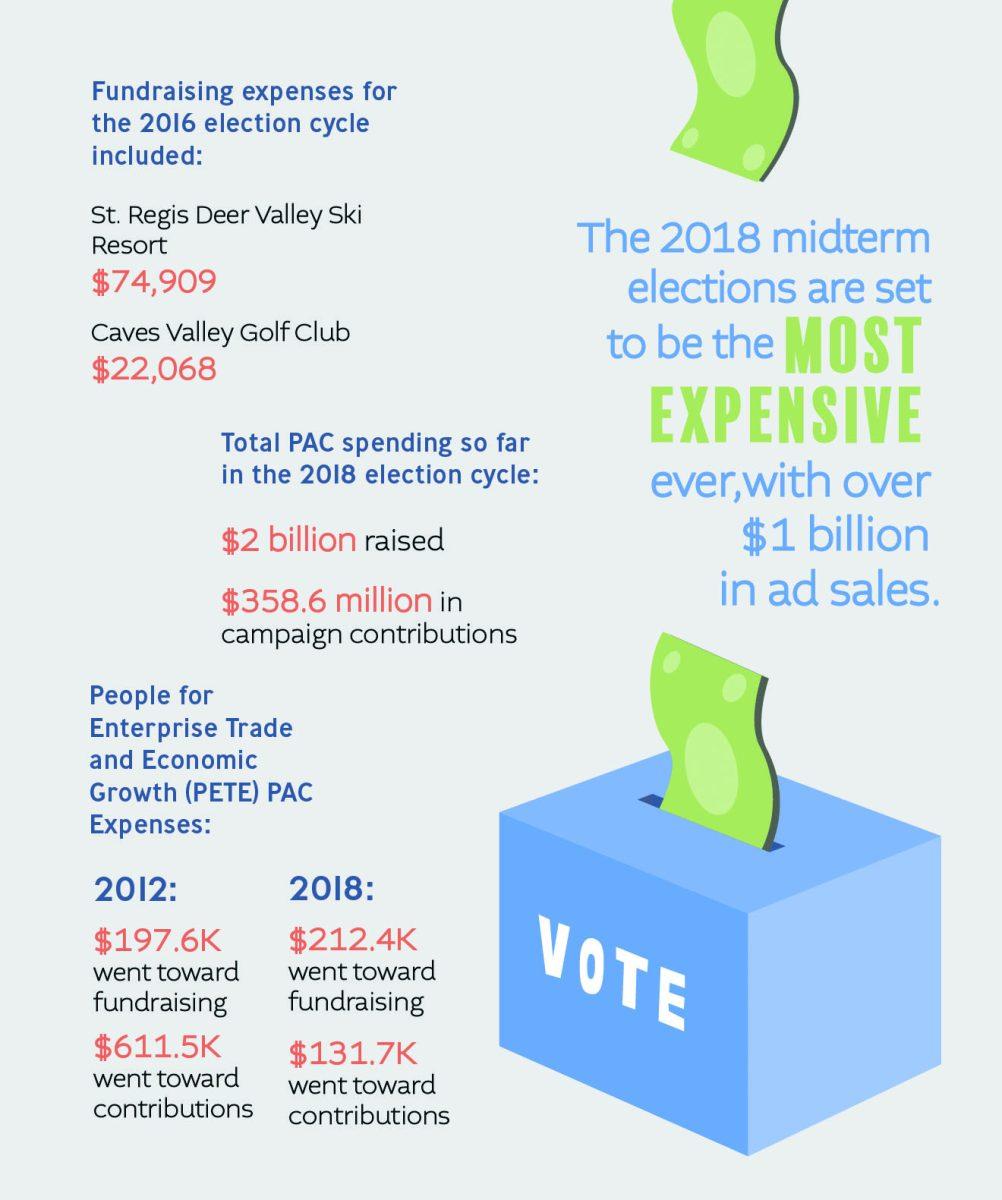A Texas representative responsible for the congressional district including UTD is currently in a congressional race and has caused controversy after an external news outlet investigated his political finances.
On July 20, The Texas Observer published an article delving into congressman Pete Sessions’ political action committee, People for Enterprise Trade and Economic Growth. The article uncovered fundraising expenses, including a ski resort and a golf club, totaling over $96,000 in the 2016 election cycle. Sessions, a Republican, is currently running for re-election against Democratic candidate Colin Allred in House District 32, located mostly in Dallas. Political science professor Robert Lowry said these kinds of expenditures are not uncommon for PACs.
“PACs that are not connected with a corporation or a union, they actually do spend a lot of the money they raise on raising money because they have to send out requests and that sort of stuff,” Lowry said.
According to OpenSecrets, a government watchdog, total PAC fundraising efforts have reached $2 billion so far in the 2018 election cycle, compared to $360 million given to candidates. Lowry said to keep in mind that the 2018 cycle is not over, and that the gap is likely to close.
Fundraising expenses for the PETE PAC tripled between the 2012 and 2018 cycles, jumping from 19 percent to 58 percent of total PAC expenditures. In February 2017, PAC managers amended Federal Election Commission filings to change the description of expenses totaling over $20,000 at Caves Valley Golf Club from membership fees for Sessions to a PAC fundraising event. The Sessions campaign did not respond to repeated requests for comment.
As the fundraising budget increased, the amount of money for contributions decreased, dropping nearly 23 percent between 2012 and 2018. Contributions are usually given to other candidates to help with funding during election cycles. Lowry said this kind of change is unusual for a PAC.
“I don’t know why that would be, unless the people he’s raising money from are getting more and more requests from other political committees, so it’s just harder to get them to give,” Lowry said. “Other than that, I wouldn’t know.”
Despite the increase in fundraising efforts, the PAC had more expenses than revenue during the 2014 cycle and is experiencing the same deficit during the 2018 cycle thus far. Lowry said this increase in fundraising could come from increased competition as methods of campaigning change.
“In any given election, it’s an arms race, and people just sort of raise as much money as they can and spend it,” he said. “Over time, with the loosening of some of the campaign finance laws and development of new technologies, like raising money over the internet, there are more ways to raise money and it just keeps going up.
In addition to his PAC, Sessions’ campaign managers also submitted FEC filings with financial records for his congressional campaign. According to the April 2017 filings, the Sessions campaign received $15,000 in donations for the primary election from six employees working at the same company, Paragon Healthcare.
Campaign finance law for congressional elections dictates that corporations aren’t allowed to give money directly to candidates and caps individual donations at $2,700 per election. This means an individual can donate that maximum amount twice during an election cycle, once for the primary election and once for the general. Lowry said those wanting to donate are legally required to list their employer.
“If an individual contributes more than $200, then the candidates’ campaign committee is supposed to notify the FEC of their name, their address and their place of business,” he said. “So that’s how they can aggregate those up, but those count as individual contributions.”
While Sessions is an incumbent, House District 32 narrowly voted for Hillary Clinton in the 2016 presidential election, leading experts to judge the congressional race as a toss-up between Sessions and Allred. The 2018 midterm elections are set to be the most expensive in history, with over $1 billion in ad sales. However, Lowry warned against getting excited by the label.
“It seems like every election is the most expensive one, presidential years more than midterm ones,” Lowry said. “It seems like at some point it would have to level off, but not so far.”











